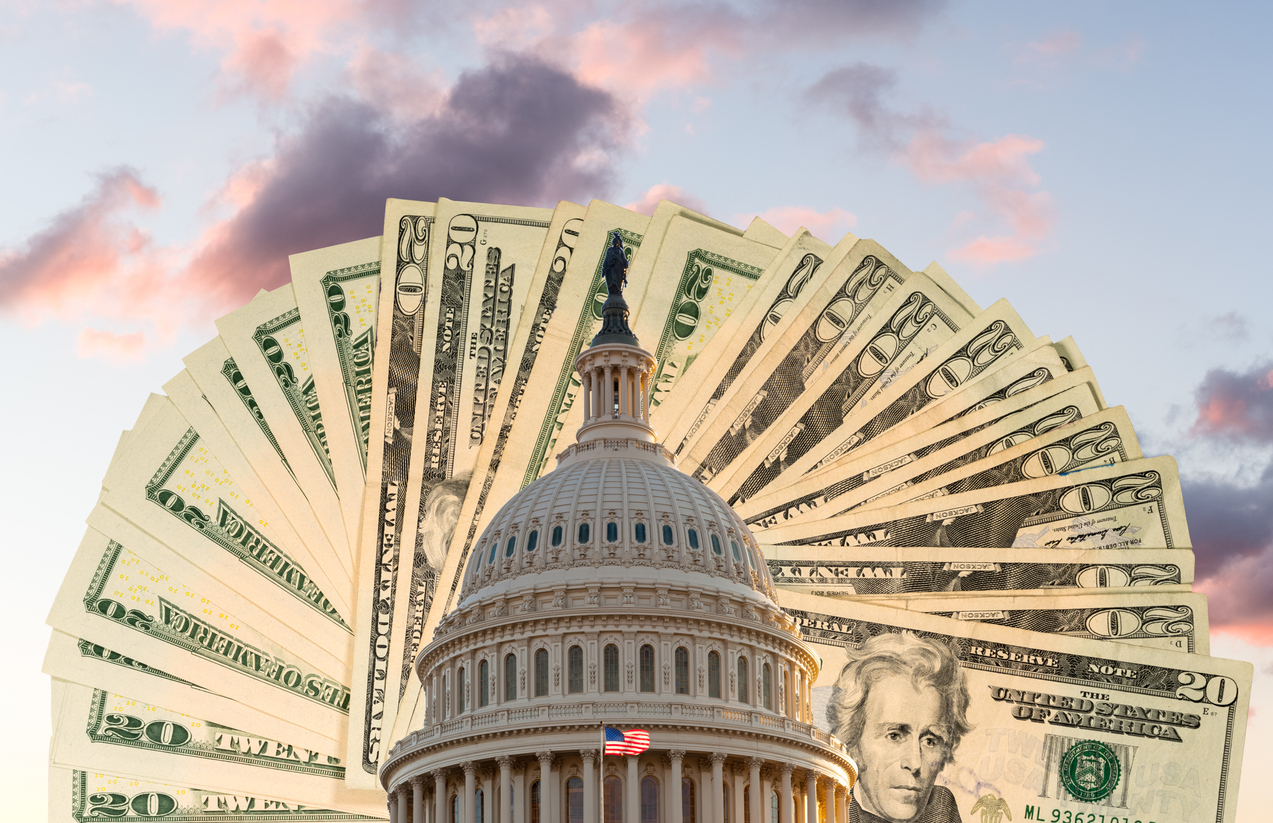Four states held primaries Tuesday—Vermont, Wisconsin, Connecticut, and Minnesota
Wisconsin
Governor Scott Walker defeated his primary challenger with more than 90 percent of the vote. However, he may be in trouble come November. The Democratic nominee, state superintendent Tony Evers, led Walker by 13 points in a recent poll.
Evers emerged from a crowded primary with 41.7 percent of the vote, enough to beat nine opponents. Mahlon Mitchell, president of the professional fire fighters of Wisconsin, received 16.4 percent of the vote. Assemblywoman Kelda Roys picked up 12.8 percent in rural counties in the western part of the state. No other candidate received more than 10 percent of the vote.
Democratic candidates stressed the importance of beating Walker, and tried to paint themselves as the best-equipped to do so. Evers pointed to previous statewide victories for Superintendent and his experience in education, while receiving endorsements from many local politicians. Mitchell emphasized labor policy and was endorsed by the AFL-CIO and other unions. He was also endorsed by U.S Sen. Kamala Harris (D-CA). Roys, meanwhile, branded herself as the progressive candidate and pointed to her previous experience in politics. Her endorsements include EMILY’s List, NARAL Pro-Choice America, and Sen. Kirsten Gillibrand (D-NY), among others.
The race for governor should be a close one this fall. The state has had a Republican trifecta since 2011 and voted for Donald Trump in the 2016 presidential election after not voting for a Republican candidate since Ronald Reagan in 1984. However, Democrats are energized in a state that usually has competitive elections. Taking these factors into account, both the Cook Political Report and Inside Elections rate this race as “Lean Republican.”
Minnesota
Democratic Governor Mark Dayton is retiring, and though the state has not voted Republican in a presidential election since Richard Nixon’s landslide victory in 1972, state politics have been more competitive, and are trending more Republican.
U.S. Rep. Tim Walz, state Representative Erin Murphy, and state Attorney General Lori Swanson battled for the Democratic nomination. Swanson had been leading, but Walz won with 41.6 percent, carrying much of the southern and central parts of the state. Murphy was polling in third behind Walz and Swanson, but managed to place second with 32 percent of the vote. Swanson picked up 24.5 percent. Allegations that Swanson used employees from the Attorney General’s office to do campaign work likely hurt her.
Walz is a moderate candidate with an “A” rating from the NRA, something he will have to face when trying to convince Democrats to vote for him in November. However, his centrist policies could become a big asset in a state that’s trending purple.
In the Republican primary, former Governor Tim Pawlenty was defeated by former state Representative Jeff Johnson for the Republican party nomination. Pawlenty had a sizable lead coming into the primary, as well as more campaign cash than Johnson. However, Johnson pulled off a big upset Tuesday night, beating Pawlenty 52.6 to 43.9 percent. If they can hold on to the majority in the state legislature, Republicans have an opportunity for a unified state government for the first time in 50 years.
Pawlenty focused largely on education, healthcare, and lowering taxes for the middle class in his primary campaign, but also took hard stances on illegal immigration and welfare fraud. He also earned an endorsement from head of the Minneapolis Police Union, Lieutenant Bob Kroll. Johnson branded himself as the more Trump-like candidate and received an early endorsement from Florida Senator Marco Rubio.
The Cook Political Report has given this race a “toss-up” rating while Inside Elections says it leans Democratic.
Connecticut
The deeply unpopular Democratic Governor Daniel Malloy, who has a 21-percent approval rating, is stepping down after two terms in office. Although Connecticut is a blue state, this gubernatorial election is on the GOP radar. Moreover, Republicans controlled the governor’s seat for 15 years before Malloy was inaugurated in 2011.
Of the five GOP candidates, none cracked 30 percent or sank into the single digits. Businessman and former Democrat Bob Stefanowski came out with 29.4 percent. Mark Bougton, Danbury Mayor, earned the state party’s endorsement and came in second with 21.3 percent, while former hedge fund manager David Stemerman picked up 18.3 percent of the vote, good enough for third. Trumbull Town First Selectman Tim Herbst and tech entrepreneur Steve Obsitnik finished fourth and fifth, with 17.6 and 13.4 percent, respectively.
Stefanowski has argued that Connecticut should do away with their state income tax. He’s also stressed his political network, and once called Democratic candidate Ned Lamont a plutocrat.
On the Democratic side, Lamont, a businessman and previous gubernatorial candidate, crushed mayor of Bridgeport Joseph Ganim with 81.2 percent of the vote. Lamont focused on economic messages and advocated for a $15 minimum wage, in addition to paid family and medical leave. Lamont also supported greater firearm restrictions, including a ban on the sale of high-capacity magazines, mandated registration of all existing assault rifles and high-capacity magazines, and background checks on fall firearm sales.
The Cook Political Report says this race is a toss-up while Inside Elections says it leans Democratic.
Vermont
Republican Governor Phil Scott fended off primary challenger and small business owner Keith Stern, winning 67.5 to 32.5 percent. Scott was first elected in 2016, but is up for reelection again because Vermont elect’s governors every two years.
Scott has taken major criticism for increasing gun control in the state. After raising the age limit to buy guns to 21, strengthening background checks, banning bump stocks, and putting limits on magazines, he has run into significant opposition in the gun-loving state. Despite the blowback, he’s done well against potential opponents.
Meanwhile, the Democrats have a chance to make history. Vermont Electric Cooperative CEO Christine Hallquist could become the first transgender woman to win a statewide election. She beat Navy veteran James Ehlers 48.3 to 22.1 percent.
Now, Hallquist will have to run against the governor she voted for in 2016, and will be running on a progressive platform. She supports raising the minimum wage to $15 per hour, hopes to develop a plan to deliver better broadband to rural areas, and is in favor of universal healthcare.
Despite Scott’s low approval ratings, both the Cook Political Report and Inside Elections say this race is Solid Republican.
Kansas Update:
After a week of uncertainty, Kansas Governor Jeff Colyer conceded to Secretary of State Kris Kobach, who will now serve as the GOP gubernatorial candidate in November. Kobach was leading by more than 300 votes when Colyer decided to throw in the towel. Kobach is a close ally of Trump’s and headed the President’s voter fraud commission. He will face Democratic nominee Laura Kelly.
Latest News
Photo credit: iStock.com/Maha1450 In honor of Presidents’ Day, there is no better time than now to reflect on the significant legislative and executive achievements of our nation's leaders. Throughout the last nearly 250 years, each [...]
Photo credit: iStock.com/yevtony Last week, the National Governors Association (NGA) elected Utah Governor Spencer Cox (R) as its new Chair and Colorado Governor Jared Polis (D) as NGA Vice Chair. Cox succeeds New Jersey Governor [...]
Photo Credit: iStock.com/William_Potter H.R. 3746 is a complex bill that aims to address critical financial issues in the United States. It suspends the debt ceiling, imposes spending limits, introduces work requirements, and adjusts energy permitting [...]
Photo credit: iStock.com/BackyardProduction On March 9, 2023, the White House released President Biden’s proposed budget for Fiscal Year 2024. The budget, representing $6 trillion in spending, aims to address several key issues, including climate change, [...]






Stay In Touch